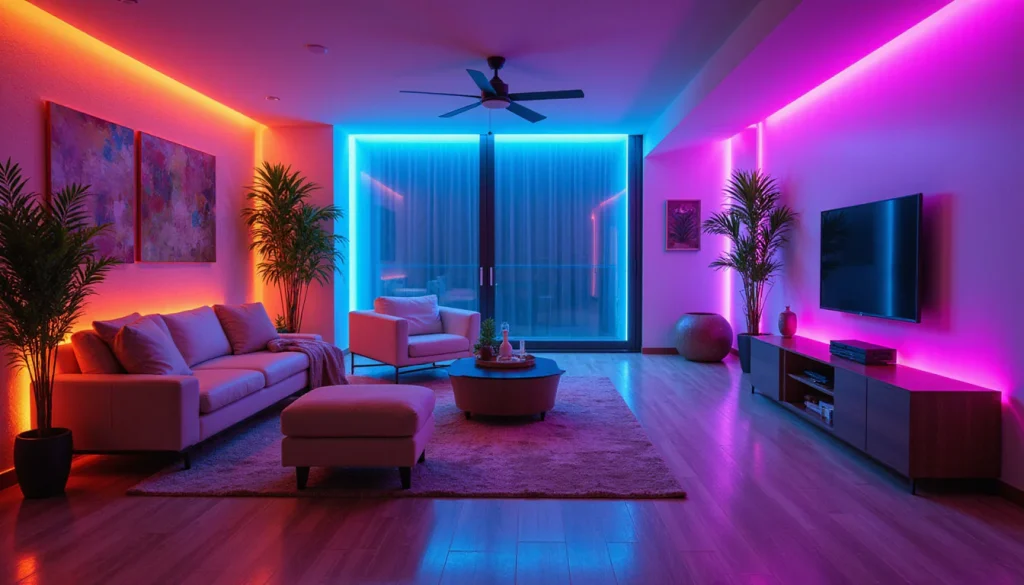LED lighting has become a practical choice for homes, offices, and commercial spaces. Its energy efficiency, flexibility, and wide range of applications make it a preferred option for modern lighting projects. From creating ambient effects to providing functional illumination, LEDs offer versatility that traditional lighting cannot match. Understanding the components of an LED setup, including strips and power supplies, is essential for achieving optimal results.
Understanding RGB LED Strip Lights
RGB LED strip lights combine red, green, and blue diodes to produce a spectrum of colors. They are commonly used in interior design, accent lighting, and decorative setups. These strips are flexible and can be cut to size, making them suitable for various surfaces, including ceilings, under cabinets, and display units.
When planning larger installations, buying in bulk can be more efficient. Ordering in large quantities allows for consistent color output and reduces the need for frequent replacements. Key considerations for bulk purchases include color brightness, length per roll, and compatibility with controllers. Correct planning ensures the lighting system is both effective and visually appealing.
Using rgb led strip lights bulk can save time and effort, especially for projects requiring uniform lighting across multiple areas. Bulk options also allow for better integration with smart home systems and automation setups. Selecting the right type of RGB strips ensures long-lasting performance without frequent maintenance.
Powering LED Systems Effectively
A crucial aspect of LED setups is choosing the correct power supply. The power supply regulates voltage and ensures stable performance, which prevents flickering or damage to the LEDs. LED strips have specific voltage and wattage requirements, and using the wrong supply can reduce efficiency and lifespan.
For environments exposed to moisture or outdoor conditions, durability is critical. Waterproof Led Power Supply offers protection against water, dust, and other environmental factors. This type of power supply is ideal for outdoor installations, bathrooms, kitchens, or industrial settings where exposure to moisture is likely. Waterproof solutions maintain stable performance, reducing the risk of short circuits or failures.
Installation Best Practices
Proper installation maximizes both efficiency and safety. LED strips should be mounted on clean, dry surfaces, and power connections must be secure. When using multiple strips, consider voltage drop over long distances, as this can affect brightness. Spacing the power supply appropriately ensures that all connected strips receive adequate power.
Cable management also plays a role in maintaining a neat setup. Using channels or conduits helps protect wiring from damage and simplifies maintenance. Following safety guidelines prevents overheating and ensures that the system operates reliably over time.
Maintenance and Longevity
Maintaining LED strips and power supplies prolongs their functional life. Cleaning surfaces regularly prevents dust buildup, which can reduce brightness. Inspecting connections and checking for signs of wear helps prevent failures before they occur.
LEDs are generally low-maintenance, but combining them with a reliable power supply adds stability. Waterproof options provide additional assurance, particularly in areas prone to moisture or temperature fluctuations. Addressing minor issues early avoids costly repairs or replacements and keeps lighting systems performing consistently.
Energy Efficiency and Cost Considerations
One of the main advantages of LED lighting is energy efficiency. Proper installation and compatible power supplies can significantly reduce electricity consumption. Choosing the correct wattage and voltage for each strip ensures the system uses only the power it needs.
Waterproof power supplies are not only durable but also contribute to energy savings. They maintain consistent output even in challenging conditions, preventing energy loss due to fluctuations. Long-term, an efficient LED setup reduces operational costs while maintaining high-quality lighting performance.
Conclusion
Selecting the right LED components is essential for reliable and effective lighting. Bulk RGB LED strips allow for uniform color output and simplify large-scale installations. Pairing these strips with durable, waterproof power supplies ensures stability and longevity. Proper installation, maintenance, and planning further enhance efficiency and reduce energy consumption. By focusing on quality and compatibility rather than promotional claims, you can create a lighting system that performs consistently and meets both functional and aesthetic needs.
